Climate Change: How to Protect Your Commercial Roofing System
June , 2023 | 6 min. read
By David Toth
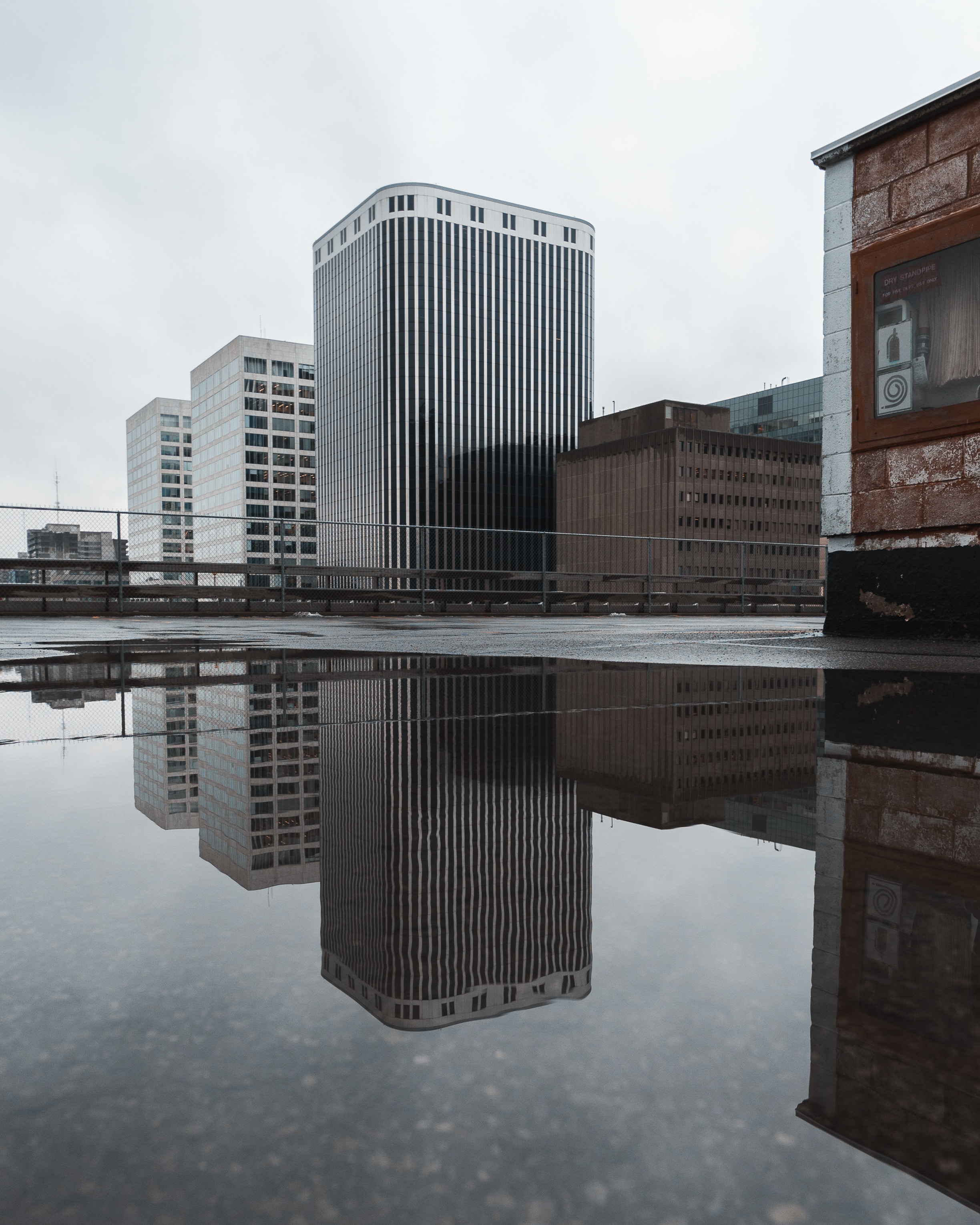
Climate change is rapidly altering our planet's weather patterns and posing significant challenges for various regions and buildings. One area greatly affected by these changes is commercial roofing. As temperatures rise, extreme weather events become more frequent, and precipitation patterns shift, commercial roofing systems are facing unprecedented challenges.
At RoofCrafters, we’ve seen firsthand that the impacts of climate change on commercial roofing can range from increased thermal stress and material deterioration to damage caused by intense storms, heavy rainfall, and hailstorms. Additionally, shifting climate zones and evolving energy efficiency requirements further complicate the task of protecting commercial roofs. Fun, right?
That being said, commercial business owners must understand and address the specific vulnerabilities of their roofing systems to climate change. Don’t stress, you’re in the right place. In this article, you’ll learn how exactly climate change impacts your commercial roofing system, and how you can mitigate those consequences by protecting your roof. So, let’s get started!
How Does Climate Change Affect Commercials Roofs?
Climate change can have several impacts on commercial roofing. Here are some ways in which climate change can affect commercial roofing systems:
Increased temperatures: Rising temperatures associated with climate change can lead to increased thermal stress on roofing materials. This can cause the expansion and contraction of roofing materials, leading to cracks, splits, and accelerated aging. Heat can also cause the deterioration of certain roofing materials, such as membranes or coatings.
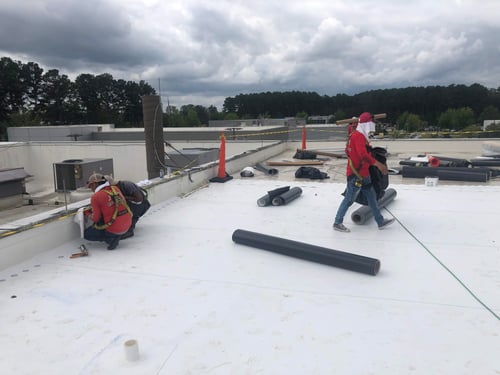
Extreme weather events: Climate change is contributing to an increase in extreme weather events like hurricanes, heavy rainfall, and hailstorms. These events can damage commercial roofs by causing wind uplift, tearing membranes, or causing water penetration. Hail can also dent or puncture roofing materials, leading to leaks and reduced overall durability.
Increased precipitation: Climate change can also lead to changes in precipitation patterns, including more frequent and intense rainfall in some regions. Excessive rainwater can accumulate on flat or low-sloped roofs, leading to ponding or pooling. This prolonged exposure to water can weaken roofing materials, compromise their integrity, and increase the risk of leaks and structural damage.
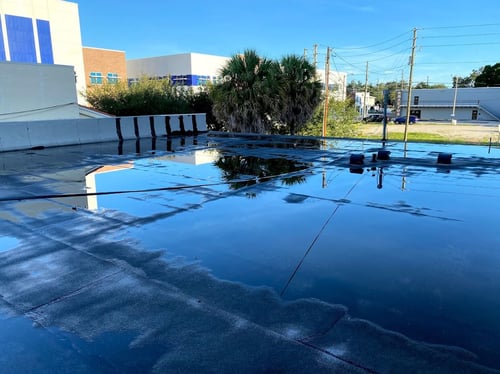
Shifting climate zones: Mother Nature can also cause the geographic distribution of climate zones, resulting in commercial buildings experiencing weather conditions they were not originally designed for. For example, buildings in traditionally dry regions may face increased rainfall and moisture-related challenges, requiring roofing systems with improved water resistance and drainage capabilities.
Energy efficiency requirements: As the focus on energy efficiency and sustainability grows, building codes and regulations are evolving to promote energy-efficient roofing systems. Commercial buildings may need to upgrade their roofs to meet these new requirements, such as installing reflective coatings or incorporating green roof technology. Failure to comply with these regulations can result in increased operating costs or restrictions on building usage.
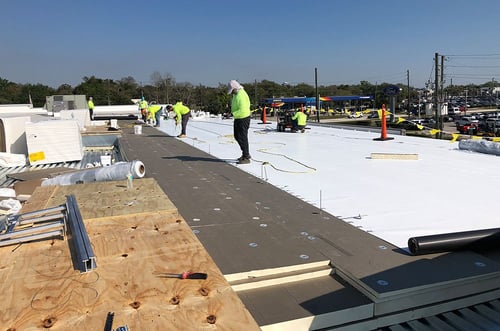
Maintenance and repair costs: Climate change-related impacts on commercial roofing can result in increased maintenance and repair costs. Roof inspections, repairs, and replacements may need to be carried out more frequently due to weather-related damages. Additionally, insurance premiums for commercial properties can rise in regions prone to extreme weather events, further adding to the overall costs.
How Can Commercial Business Owners Protect Their Roofs Against Climate Change?
By implementing certain measures, commercial business owners can prolong the lifespan of their roofs and minimize the impact of climate change. Here are some of the ways you can protect your property from the damaging effects of climate change:
Choose Resilient Roofing Materials
Selecting durable and weather-resistant roofing materials can help mitigate the effects of climate change. Consider materials that are designed to withstand high temperatures, strong winds, heavy rain, hail, and other extreme weather conditions. Consult with roofing professionals to identify materials that are suitable for your specific climate and building requirements.
You should also consider applying reflective coatings or cool roof systems to reduce heat absorption and lower the roof surface temperature. These coatings reflect a significant portion of sunlight, reducing the amount of heat transferred into the building. This can help improve energy efficiency, reduce cooling costs, and extend the life of the roof.
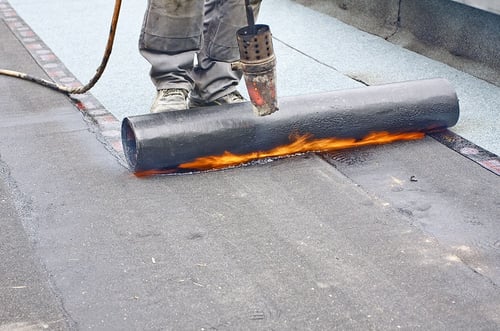
Also, enhancing roof insulation can help regulate temperatures and reduce energy consumption. Proper insulation helps keep the building cool in hot climates and warm in colder climates, minimizing thermal stress on the roof and extending its lifespan. This can also lead to energy savings and improved indoor comfort.
Conduct Regular Inspections & Maintenance
Implement a proactive maintenance program that includes regular roof inspections by qualified professionals. Inspections can identify early signs of damage or wear and allow for timely repairs. Pay attention to vulnerable areas such as flashing, seals, and drainage systems. Promptly address any issues to prevent further damage.
During an inspection, your estimator can also be sure to check that your roof has an effective and efficient drainage system to prevent ponding or pooling of water. Poor drainage can lead to water infiltration, leaks, and damage to the roofing materials. Regularly clean gutters, downspouts, and drains to prevent blockages that can impede proper water flow.
Stay Up to Date on Codes, Regulations, and Insurance
Keep on top of local building codes and regulations related to roofing and climate resilience. Understand any specific requirements or guidelines for commercial roofing systems in your area. Adhering to these codes ensures compliance and can help protect your roof from climate-related risks.
It’s also important to review your insurance policies and ensure they adequately cover potential climate-related damages. Understand the terms, exclusions, and limitations of your coverage. Explore options for additional coverage, such as flood insurance or policies that specifically address extreme weather events.
Be Proactive About Your Commercial Roof Protection
As you now know, protecting your commercial roof from the impacts of climate change is crucial for the long-term resilience and durability of the building. As climate change brings about rising temperatures, extreme weather events, increased precipitation, and shifting climate patterns, commercial business owners must take proactive steps to safeguard their roofing systems.
By selecting resilient materials, conducting regular inspections and maintenance, improving insulation and drainage, and considering innovative technologies like reflective coatings and green roofs, businesses can mitigate the effects of climate change on their roofs. Staying informed about local building codes and regulations, as well as reviewing insurance coverage, further strengthens the overall protection strategy.
When commercial business owners invest in climate-resilient roofing practices, they can ensure the integrity of their roofs, reduce repair costs, enhance energy efficiency, and contribute to a more sustainable and climate-resilient future. If you’re eager to start while you’re ahead and protect your commercial roof from climate change, be sure to hit the “schedule an inspection” button down below, and one of our expertly trained estimators will provide you with an inspection at your earliest convenience and explain your roofing options.
My name is David Toth and I am the lead estimator in North Florida with RoofCrafters Roofing. Originally from New Brunswick, I have called Florida home for the past 47 years. I enjoy cooking along with traveling to different historical areas in Florida when I have free time.



